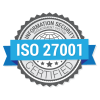Navigating the procurement landscape in the IT sector presents unique challenges, mostly due to the opaque and highly variable pricing structures that dominate the field. External benchmarking, while valuable, often falls short in IT procurement because many suppliers do not provide standard pricing lists publicly, and even when they do, these lists rarely reflect the final transaction prices due to personalized negotiation terms, especially in enterprise sales.
This lack of transparency and standardization makes securing the best deals a complex task reliant on more than just market knowledge. So how are you able to find better pricing opportunities when you’re lacking a lot of the external data points you need? That’s what we’ll be talking about today. In this article, we aim to unravel the layers of internal benchmarking, and the strategies procurement professionals can use to unlock the value of combing through their internal data to drive better negotiations and achieve competitive pricing.
Benchmarking Methods
Benchmarking, a method used to measure the performance of a company’s products, services, or processes against those considered best in class, can be categorized into two main types: internal and external. In the context of procurement, particularly when analysing suppliers, internal benchmarking and external benchmarking serve as critical tools for evaluating supplier contractual terms and pricing structures, though they are fundamentally different in their approach and application.
Internal benchmarking involves comparing the prices and contractual terms offered by different suppliers to the same organization. This method allows procurement teams to leverage their own historical data to determine if they are consistently receiving the best possible terms from their suppliers. By examining past agreements and purchases, organizations can identify patterns of spending, spot opportunities for negotiation, and standardize contracts across departments to drive improvements, cost savings and more favorable contractual terms.
On the other hand, external benchmarking involves looking outside the organization to compare supplier terms and pricing against what is available in the wider market or industry. This approach aims to gauge how competitive an organization’s supplier terms and pricing structure is relative to industry standards or to what other companies are achieving.
Both types of benchmarking are valuable, but each comes with its own set of challenges and benefits. Internal benchmarking provides a focused insight based on actual historical data, offering a clearer picture of where efficiencies or improvements can be made within the organization. External benchmarking, while more challenging due to the issues of data comparability and availability, offers a broader perspective, helping companies understand their position in the marketplace and potentially leverage this information in negotiations with suppliers. There are considerable challenges in obtaining valuable external benchmarking data, though, as we’ll get into it in more detail below.
The Challenges of Using External Benchmarking in IT Procurement
External benchmarking in IT procurement faces several significant hurdles that can limit its effectiveness and reliability. One of the primary challenges is the lack of public pricing information. Unlike many other industries, IT suppliers often do not disclose their price lists publicly, guarding them as competitive secrets. This practice makes it difficult for procurement teams to compare prices and assess market rates accurately.
Additionally, the complexity of IT products and services further complicates external benchmarking. IT solutions often include customizable features and configurations that vary widely from one customer to another, making direct comparisons nearly impossible. Each procurement deal is typically unique, tailored to the specific needs and scale of the organization, which means that standardized pricing models are rarely applicable.
Negotiation variances also play a significant role. Pricing in IT procurement is not just about the list price; it often involves complex negotiations that take into account factors like volume discounts, long-term customer relationships, bundled services, and added-value offerings. These negotiations can result in significantly different final prices for different customers, even for the same products or services. This variability undermines the utility of external benchmarking because the final deal terms are seldom transparent or comparable across different enterprises.
Furthermore, market dynamics such as technological advancements, competitive actions, and economic conditions can rapidly alter pricing structures and product offerings in the IT sector. What might be a competitive price one year could become outdated the next, as new technologies emerge and market demands shift. Keeping up-to-date with such fast-paced changes is a constant challenge for external benchmarking efforts.
Lastly, the proprietary nature of many IT solutions means that even when pricing is known, the specific features, support agreements, and integration capabilities that influence pricing decisions are often confidential. This opacity limits the ability to perform a true ‘apples to apples’ comparison between providers, thereby reducing the effectiveness of external benchmarking in making informed procurement decisions.
The Power of Internal Benchmarking and How to Leverage It to Your Advantage
As mentioned above, Internal benchmarking offers a massive advantage in procurement by enabling organizations to utilize their own historical data to secure more favorable pricing terms – and that applies for both renewals and new purchases. By leveraging a comprehensive internal database of previous transactions, procurement teams can identify pricing trends and outliers. This allows them to challenge suppliers who quote above the historical average and argue for pricing at least on par with, if not better than, previously secured deals – ensuring pricing discipline among suppliers for years to come. This is particularly effective in industries where pricing is not transparent, as it gives procurement professionals the factual backing needed to demand better terms based on proven spending patterns.
Additionally, this data can pinpoint opportunities for bulk purchasing or consolidating suppliers to further drive down costs. Internal benchmarking can also help standardize procurement processes and pricing across different departments within the organization.
So how can you implement effective Internal Benchmarking? There are a few strategies that can help you secure a good foundation:
-
- Create One Source of Record: Establish a centralized database to collect and manage procurement data across the organization.
-
- Training and Culture: Develop a culture that emphasizes data-driven decision-making, ensuring that procurement staff are trained in extracting and interpreting benchmarking data or using technology that can assist them with that.
- Make Use of Effective Analytics Tools: Take advantage of tech solutions which can analyze spending patterns, identify trends, and compare your supplier costs over time.
Thinking Machine is an AI cloud-based solution for data extraction from documents which can also work as a centralized data storage of your procurement documents. The Thinking Machine platform offers capabilities not only in data extraction, but it can automatically identify data that’s relevant to your spend wherever structured data about assets, timesheets, facility locations, services are missing. It also automatically classifies that data into linked categories, making it easier to analyze spending patterns and identify even more savings opportunities. Beyond these capabilities, the platform leverages sophisticated algorithms to examine historical demand data in relation to existing contracts. This analysis empowers procurement teams to negotiate more effectively and make decisions that are not only reactive but also proactive.
Once you tackled the strategies above, all you need to do is make sure:
-
- the data is kept up to date to reflect the latest purchasing trends and prices,
-
- your database Includes all types of IT spending in the benchmarking process to get a holistic view of procurement efforts, and
- Involve key stakeholders from IT and finance to ensure that benchmarking aligns with broader business objectives.
Key Takeaways
Although there’s value on taking advantage of both external and internal benchmarking, we believe there’s a hidden power in leveraging internal benchmarking to your advantage – the data is already there, you just need shine a proper light on it. Internal benchmarking offers a clearer picture of where efficiencies or improvements can be made within the organization.
If you’re meticulous about analyzing your organization’s own historical data, you can unlock powerful insights that foster more strategic negotiations and lead to more favorable procurement outcomes than taking advantage of whatever public data you are able to scrape from the internet (often outdated and unreliable). Here are the key takeaways to ensure you maximize the benefits of internal benchmarking:
-
- Embrace Data Transparency: Build a culture of transparency where data is not only accessible but effectively utilized to drive decisions. Ensuring that all procurement data is accurately recorded and centrally stored will empower your teams to extract the most value from benchmarking efforts.
-
- Invest in Technology: Leverage advanced analytics tools like Thinking Machine to streamline data analysis and gain deeper insights into spending patterns. These technologies can transform raw data into actionable intelligence, enabling your procurement team to anticipate market trends and adjust strategies proactively.
-
- Continuously Update and Adapt: Benchmarking is not a one-time process but a continuous strategy that requires regular updates and adjustments. Keeping your data and analyses current ensures that your procurement strategies remain aligned with both market conditions and internal objectives.
-
- Foster Collaborative Engagement: Engage stakeholders across departments to ensure that the insights gained from internal benchmarking are integrated into the broader business strategies. This collaborative approach not only aligns efforts but also enhances the overall impact of your procurement strategies.
- Train and Empower Your Team: Develop your procurement team’s skills in data analysis and interpretation. Training staff to effectively utilize benchmarking tools and understand their output will maximize your organization’s ability to negotiate better and make informed purchasing decisions.
With these practices properly implemented your organization can better navigate the complex pricing landscape of IT procurement, turning internal benchmarking into a strategic advantage that drives and sustain cost savings, enhances supplier relationships, and supports long-term business goals.
Ready to enact some change? If you’re ready to take action and leverage the full potential of your procurement data —we invite you to book a strategy call with us. Let’s discuss how Thinking Machine can provide the insights and efficiencies you’ve been seeking. It’s time to turn data into one of your most strategic assets and allow the advanced analytics of our platform to reveal opportunities that have been hidden in plain sight.
To start your journey with Thinking Machine, please reach out to us at sales@thinkingmachine.co. Together, we can build a legacy of efficiency, savings, and strategic success in your procurement operations.


